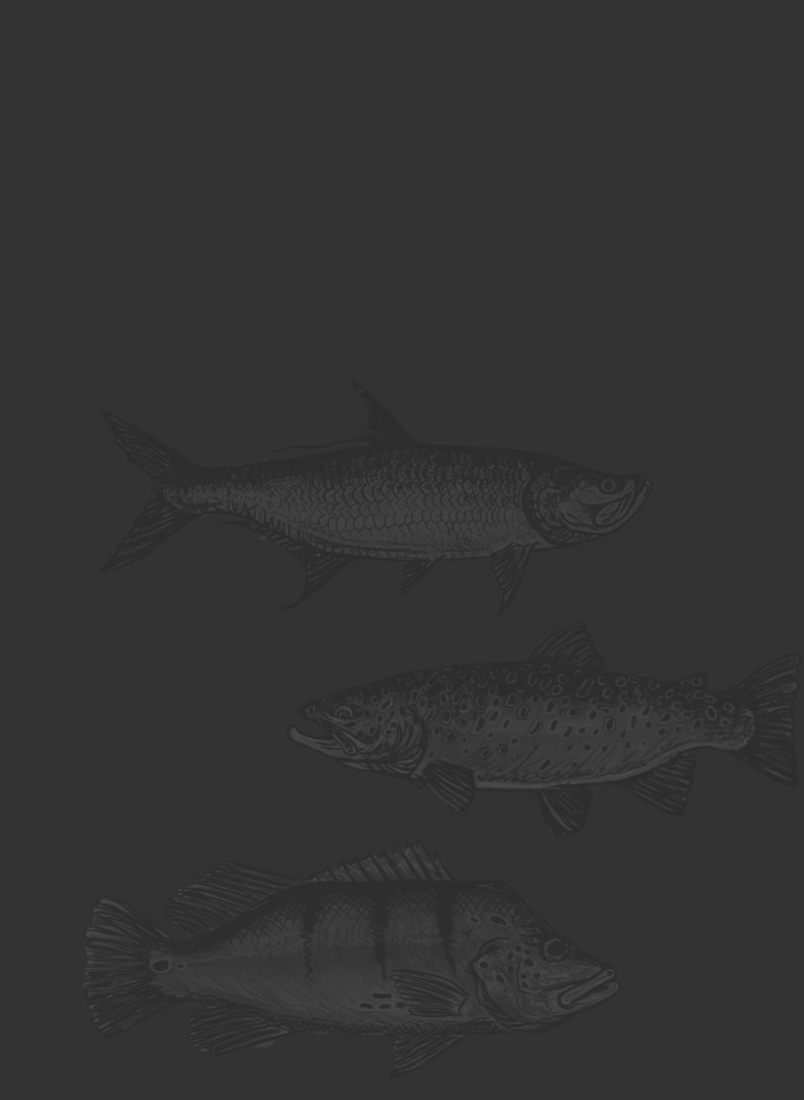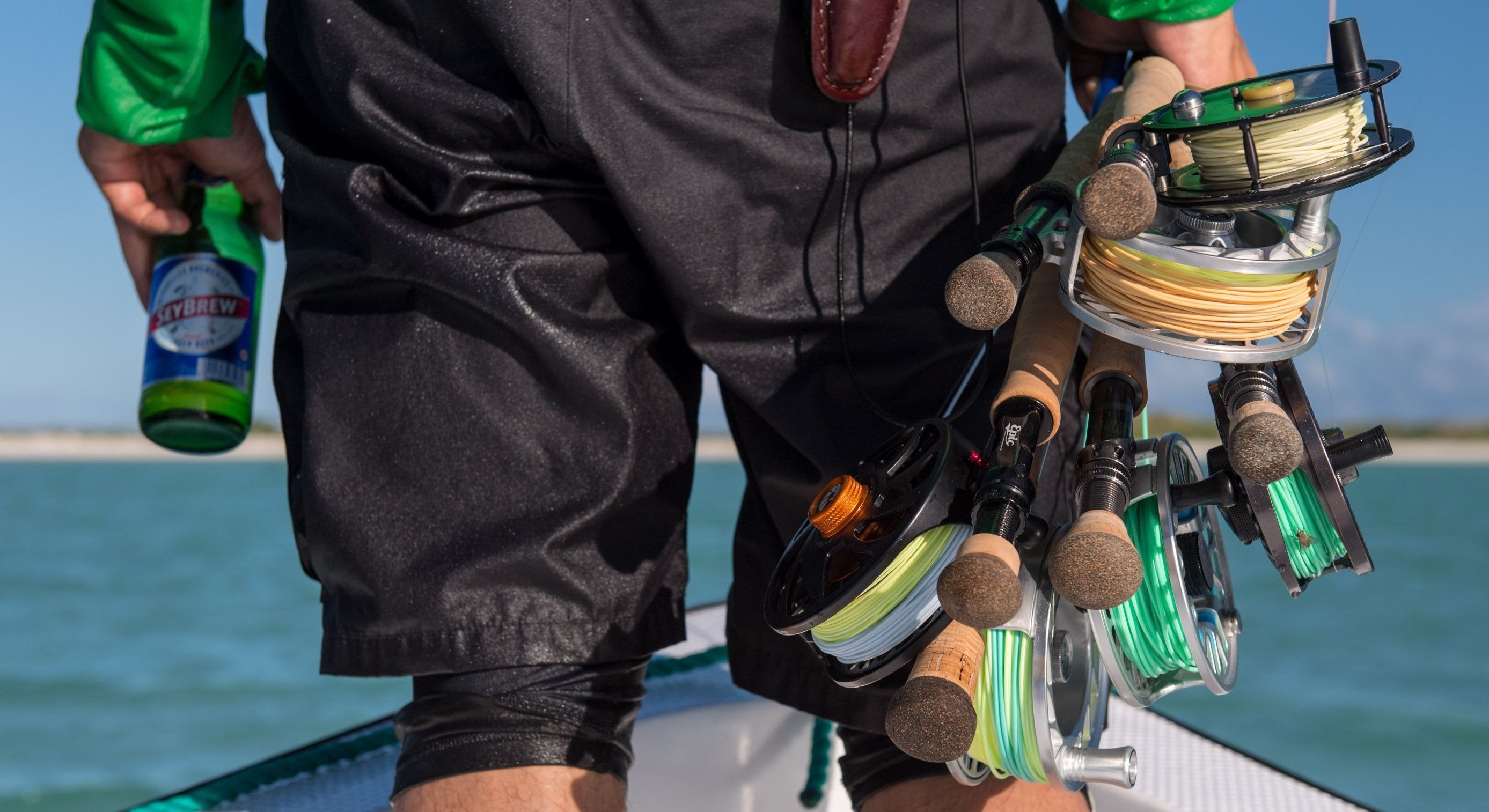At its peak, the Mother's Day Caddis hatch is truly one you have to see to believe: A blizzard of millions of fluttering caddis covering every surface, crawling up your sleeves, into your ears, and down your waders while trout gorge themselves on one of the biggest bug masses of the year. It is a jaw-dropping spectacle and a joy to witness for most any angler, though be mindful -its best to keep your mouth closed. If your squeemish over a few (hundred) bugs crawling on you, its best you avoid this one.
Mother's Day Caddis Hatch Characteristics
Otherwise known as the Grannom caddis (Brachycentrus occidentalis), the Mother's Day caddis range from size 14 to 16 with a dark olive to black abdomen. Their wings are a grayish-olive before fading as they mature, mate, and fall to the river. They hatch throughout Montana and the surrounding US Rockies, with rivers such as the Madison, Yellowstone, Missouri, Big Hole, and Idaho's Henry's Fork notable for their annual hatches.
The hatch starts as early as mid-April, while lengthy winter spells will push the hatch back. The timing of the hatch butts up to the start of runoff, so it is completely at the mercy of flows: Early hot days can turn rivers chocolate milk and shut a hatch down, while a sudden bout of snow can also delay or ruin a hatch altogether. Consistent weather conditions and a little bit of luck are required to witness one of the famous blizzard hatches and typically lasts until runoff really kicks into gear.
The hatch will begin mid to late afternoon and last till dark, though subsurface fishing generally remains strong during this time. The key to any good selection of Mother's Day caddis flies is to have all phases of the life-cycle. While you may not be seeing any adults present, you can rest assured fish are actively feeding on nymphs and emergers below.
At the peak of the hatch, it can be downright impossible to track your dry fly. This is a good problem to have, but still quite frustrating as trout rise everywhere you look. One tip to avoid this issue is to size up from what you are seeing on the water to a size 12 or 14 to make your fly stand out from the masses. Its also a good idea to have a few flies with hi-vis posts/overwings to provide you with better tracking, especially for low-light situations.
Its quite common to struggle to get a take purely down to the sheer volume of insects on the water, so picking a fish and sticking with it is highly recommended. Instead of just casting into a pod of fish, pick one near the back and read their behavior, what they are feeding on, and how frequently they are rising. Time your cast to the fish's rhythm, and put your dry fly two feet ahead of the fish. You stand a far better chance of finding success by going about the process methodically as opposed to searching for a willing fish.
As evening sets in, caddis go to lay their eggs and will be seen dapping the water, so try imitating the same movement if dead drifts or subtle twitches don't illicit an eat. If the dry fly simply doesn't cut it, a swung soft hackle is often deadly for picky fish, and a tactic you should try throughout the day.

Mother's Day Caddis Nymphs & Emergers
If you aren't finding rising fish or adult caddis, start out with a double nymph rig, especially early in the morning. As bugs begin to hatch, don't be afraid to tie on a nymph or emerger dropper beneath one of the Mother's Day caddis dries we recommend below!
1. LaFontaine's Sparkle Pupa
There's perhaps never been an angler who understood caddis better than Gary LaFontaine, and his sparkle pupa is a must have for caddis everywhere. Mother's Day caddis are a case maker caddis, surrounding themselves with river refuse such as sand, pebbles, and vegetation debris while they mature as larvae. Once ready, they cut out of this casing and rise to the surface via air bubbles, and the antron yarn of LaFontaine's sparkle pupa perfectly imitates this. Fish this in the morning or mid-day on the bottom, or the unweighted version just below the surface during a hatch.
2. Silvey's Caddis Pupa
Sylvie's caddis pupa introduces some modern materials to achieve the same effect as LaFontaine's sparkle pupa. The air bubble surrounding the caddis's abdomen is a trigger point for feeding fish, and Sylvie's caddis pupa utilizes a piece of flashy pearl braid to pull this off. With a set of emerging wings tied from starling and a defined set of antennae traditionally tied from wood duck flank fibers, this is a great pattern for imitating Mother's Day Caddis pupa, especially in olive.

3. Hare's Ear Dirty Bird
This is simply a "buggy" fly that gets things done. It borrows traits from a few different staples, including a pheasant tail nymph, hare's ear, and a partridge soft hackle. This is a versatile pattern with plenty of crossover as it can also simulate a mayfly or small stonefly nymph. Fish this dead-drifted on the bottom and let it swing toward the end of your drift to simulate an emerging caddis -- the natural movement of the partridge soft hackle and strands of krystal flash will catch their eye!
4. Edible Emerger
If they are keyed in on emergers, Silvey's Edible Emerger in olive should be a go-to pattern. The bulk of the fly's body is a hank of antron burned on the back end to create a realistic profile. A few strands of marabou imitate legs and offer plenty of natural movement, and the traditional use of starling imitates an emerging wing pad. A lightly dressed deer hair head offers natural buoyancy, with the bulk of the body riding just under the water's surface like a Mother's Day caddis in the final stages of emergence and easy picking for feeding fish.

Mother's Day Caddis Dry Flies
5. Peacock Corn Fed Caddis
The Corn Fed Caddis is a high-floating, buggy dry fly tied primarily out of CDC. The peacock variation of the corn fed caddis works best, imitating the Mother's Day caddis' dark body. The heavy use of CDC creates a nice wing profile, while CDC placed into a dubbing loop and used as hackle creates lifelike legs with tons of natural movement. This fly should ride high making it easier to track along with a small sighter post tied from para post material or poly yarn.
6. Missing Link Caddis
Mike Mercer's missing link is the definition of versatility, and while originally tied to imitate a spent caddis, it easily replicates a number of mayflies or midges in smaller sizes. The body of the fly is tied quite sparse with a lightly dubbed thorax, but the fly's signature trait are a set of splayed z-long wings that imitate a spent caddis's wings or one fluttering to get off the water. A deer hair tilt wing with hackle wrapped around the post keeps this bug floating flush with the water but easy to track.
7. Elk Hair Caddis
A generic elk hair caddis can get the job done during a Mother's Day caddis hatch, but we specifically recommend the peacock hot spot elk hair caddis. The body is wrapped with peacock herl to accurately imitate the color of the Mother's Day caddis, while a bit of blue para post wing tied in over the elk hair wing makes this fly stand out amongst the others. You can't underestimate how hard it is to track your fly amongst the hundreds of others on the water, so a bright post can be a game changers. Additionally, a small hot butt tied in at the back of the fly in chartreuse is also a subtle but important detail to imitate a mature, egg-laying caddis -- So don't be afraid to give this fly some movement!

8. Parachute Caddis
This is a great option in olive, especially in heavier flows. The parachute caddis integrates a deer hair wing that rides close to the body of the fly with the addition of a parachute post and hackle. The result is a realistic, buggy profile that rides high and is easy to track. The post is a bright poly yarn, making this is a standout any time you there are lots of caddis on the water or you are fishing in heavy riffles from a drift boat. Treat the post with a dab of floatant and this fly should stay dry and ride high all day.
9. X2 Caddis
Craig Mathews is a legendary fly innovator in Montana and the US Rockies, and his X2 caddis (otherwise known as Improved X Caddis) is just one piece of his legacy. Designed for picky fish on places like the Harrimer Ranch, the X2 caddis has a z-lon shuck, a shaggy olive dubbed body, and a combined wing of z-lon and deer hair. The fly is finished with a large head of hare's ear dubbing to create a great looking caddis imitation that has been fooling fish for decades.
Related Articles:






























